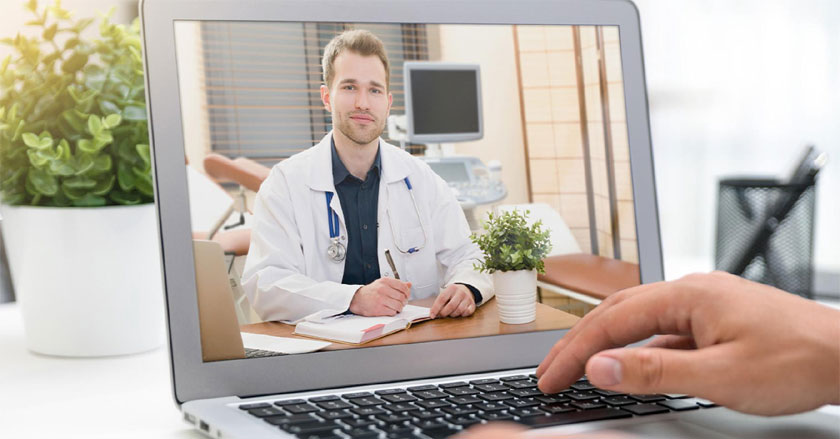Telehealth during COVID-19 Public Health Emergency (PHE)
The most important thing to remember is that payers have differing definitions of what they consider telehealth. We recommend checking with the applicable insurer for the most up-to-date information affecting requirements for coding and billing of telehealth services. The following are examples of information you should obtain from payers:
- What are the effective dates of these changes? (Most insurers are limiting this exemption to a specific period of time)
- What services are covered?
- How are those to be billed? (What codes are they accepting?)
- Do we use telehealth codes or office visit codes?
- What place of service?
- What modifiers are necessary?
- For which plans will this information be valid for? (Some will have different rules for Medicaid plans for example)
United Health Care is waiving originating site restrictions for their commercial, Medicare Advantage, and Medicaid plans. The patient may be at home or at another location. All the other requirements for telehealth must be met – real-time audio and video communication system required. These include the place of service 02 (zero two) and the GQ (asynchronous telecommunications system) or GT (interactive audio and video telecommunication system) modifier. This waiver is only in effect until April 30, 2020.
Medicare
Fee-For-Service Medicare DOES NOT allow telephone calls to be billed as telehealth. The PHE waiver provides three specific exceptions to the existing telehealth regulations:
1. The patient can be in their home or other location - they do not have to be in a healthcare facility in a HPSA.
2. The audio-video link can be something as simple as Skype or FaceTime or Facebook Messenger video calls - but it has to be a real-time audio AND video one-to-one connection, not something public-facing.
3. Cost-share can be waived - it is not automatically, but it can be waived at the providers' discretion.
CMS also stated that they will not audit to verify that there is an established patient relationship. Services are limited to the list of telehealth services at: https://www.cms.gov/Medicare/Medicare-General-Information/Telehealth/Telehealth-Codes
Place of service is 02 (zero two) for telehealth.
No modifier is necessary unless you are billing from a CAH Method II hospital (GT) or you are treating the patient for an acute stroke (G0).
There is also a modifier for a telemedicine demonstration project in Alaska or Hawaii (GQ).
This does include office visits, consultations, Transitional Care Management, and Annual Wellness Visits.
For services that have a site of service differential, payment will be made at the facility rate.
CMS has not specified an end date for these exceptions, just that they will be allowed as long as the Public Health Emergency declaration is in effect.
The key point for most payers is that the physician him or herself must have the conversation with the patient on the phone or through the audio-video link. This may be something that a nurse may have handled previously, but now it must be performed by the physician to be billable.
If there is not a real-time audio-video connection, then you are limited to one of the following:For email or portal communication, we also have these codes, new for 2020:
- CPT 99421 - Online digital evaluation and management service, for an established patient, for up to 7 days, cumulative time during the 7 days; 5-10 minutes
- CPT 99422 - …11-20 minutes
- CPT 99423 - … 21 or more minutes
- G2012 - Brief communication technology-based service, e.g. virtual check-in, by a physician or other qualified health care professional who can report evaluation and management services, provided to an established patient, not originating from a related E/M service provided within the previous 7 days nor leading to an E/M service or procedure within the next 24 hours or soonest available appointment; 5-10 minutes of medical discussion.
- G2010 - Remote evaluation of recorded video and/or images submitted by an established patient (e.g., store and forward), including interpretation with follow-up with the patient within 24 business hours, not originating from a related E/M service provided within the previous 7 days nor leading to an E/M service or procedure within the next 24 hours or soonest available appointment.
Because the Secretary of HHS has declared a public health emergency physicians may prescribe controlled substances to a patient in need via telehealth. "For as long as the Secretary's designation of a public health emergency remains in effect, DEA-registered practitioners may issue prescriptions for controlled substances to patients for whom they have not conducted an in-person medical evaluation, provided all of the following conditions are met," the agency clarified.
Those conditions include:- The prescription is issued for a legitimate medical purpose by a practitioner acting in the usual course of his/her professional practice.
- The telemedicine communication is conducted using an audio-visual, real-time, two-way interactive communication system.
- The practitioner is acting in accordance with applicable Federal and State law. .
- Provided the practitioner satisfies the above requirements, the practitioner may issue the prescription using any of the methods of prescribing currently available and in the manner set forth in the DEA regulations. Thus, the practitioner may issue a prescription either electronically (for schedules II-V) or by calling in an emergency schedule II prescription to the pharmacy, or by calling in a schedule III-V prescription to the pharmacy.
- Resources:
- https://www.deadiversion.usdoj.gov/coronavirus.html
- https://www.hhs.gov/about/news/2020/01/31/secretary-azar-declares-public-health-emergency-us-2019-novel-coronavirus.html
For additional information, please contact:
Austin Pathak – austin@merakircm.com
Website: www.merakircm.com


